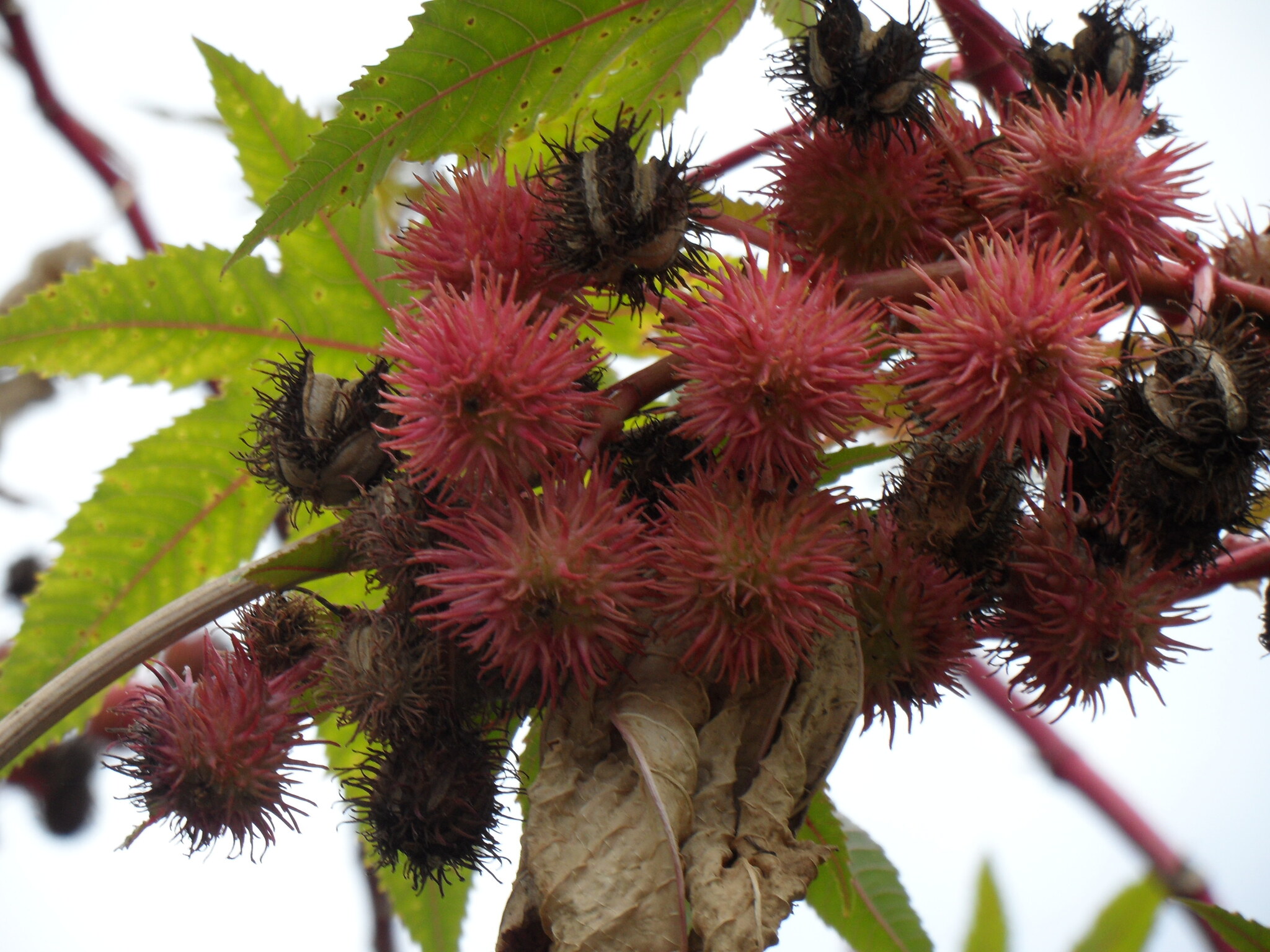
Classical Latin name.
For description see r. communis.
A rapid grower occasionally used for the bold ornamental leaves. In view of the toxic fruits this plant should no longer be grown, especially as it is a weed of waste places in all states, particularly near habitations and along creek beds. Naturalised throughout the tropics.
1 species from tropical Africa to Asia.
Seed.
Oil, which has no toxic substances, is extracted from the seeds and the different fractions have many uses as a lubricant, as an illuminant, for soaps, dyes and as a purgative. Being water-resistant, it is also used in inks, candles and crayons, paints, varnishes and other protective coverings. The Eri silkworms of Africa are fed on the leaves.
Leaves large, shiny-surfaced, palmately lobed, bronze, at least at first.
Source: (2002). Euphorbiaceae. In: . Horticultural Flora of South-eastern Australia. Volume 3. Flowering plants. Dicotyledons. Part 2. The identification of garden and cultivated plants. University of New South Wales Press.
